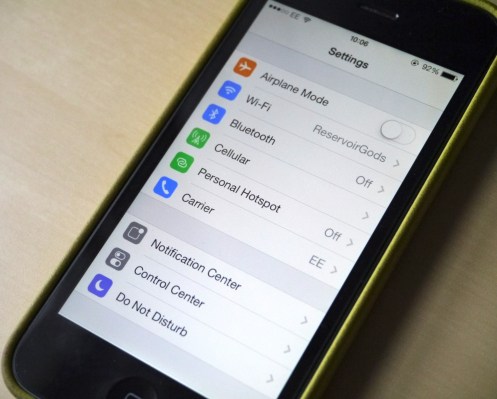It took a long time coming, but LTE/4G in the U.K. is finally achieving some significant momentum — with first-to-the-plate carrier EE announcing today that subscribers for its LTE network have passed the two million mark four months after it racked up its first million (which took 10 months).
EE said the figure is double what it was targeting for the end of 2013 — and made a grand claim about the 4G sign up rate it’s seeing being the fastest in the world outside of South Korea.
Adoption among business customers has grown “significantly”, according to the carrier — with more than 4,000 corporates and three-quarters of all new and upgrading SMEs on the EE network choosing 4G (rather than plain old 3G).
EE launched its LTE network on October 30 2012, with rival U.K. carriers Vodafone and O2 only getting into the game starting from the following summer. The U.K.’s smallest mobile network operator, Three, was last to launch 4G, in December 2013.
EE’s LTE network was initially criticised for being expensive and having miserly data limits — factors that likely held back subscriber numbers. Since launch, it has lowered tariff prices, increased some data caps, added pay-as-you-go options, boosted speeds on portions of the network and continued to build out coverage — the latter helping it hold on to its early mover advantage vs rivals.
EE says its LTE network will exceed 70% coverage of the U.K. population by the end of January. Currently, its network reaches 160 towns and cities in total. The faster portion of EE’s LTE — which offers average speeds of 24-30Mbps — is available in 20 cities across the UK.
EE’s coverage target for the LTE network is 98% of the U.K.’s population by the end of this year.
Discussing the two million subscriber figure in a statement, Olaf Swantee, CEO, EE, said the carrier is having “particular success” converting existing customers of its two mobile brands, Orange and T-Mobile, over to 4G, with around two out of three new 4G customers on the EE network having moved from Orange or T-Mobile.
(In one example of EE’s ‘energetic’ upselling of 4G that was retold to me, the carrier’s sales staff sold an LTE upgrade to an existing customer despite there being no EE 4G in that customer’s home area or at their place of work — and no plans for coverage to be added to either area in future. So, yes, that’s success of a sort.)
As for usage of its 4G network, EE said the most popular way for its LTE subscribers to bring in the New Year was to post pictures and messages to Facebook, followed by Skype, Instagram, and Twitter. Facebook data traffic on the network doubled at midnight on the 31st December, while messaging service WhatsApp saw a seven fold increase as people sent group messages and shared images to usher in 2014.
